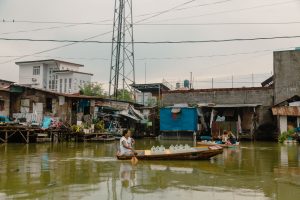Almost two years ago, in the early afternoon of December 16, 2021, Peter Barrientos, 51, a coconut copra harvester in Barangay Rizal in northeastern Siargao, prepared for an incoming storm. He wasn’t too worried. After experiencing dozens of typhoons over the years, he expected this one to pass just like the others had; he would fix any small damages afterwards. A major storm hadn’t hit Siargao since the 1980s anyway.
But in the last hours before landfall, the storm had strengthened considerably from a predicted category 3 to a monstrous category 5, catching everyone off guard. Due to poor television and internet access in the village, many were without communications or precise information about how severe the storm had become.
Barrientos became increasingly nervous for his family’s safety. This time, the storm was relentless. The wind was too strong to even run from his place to another more secure home nearby. Extreme winds and rain pummeled the island for five straight hours.
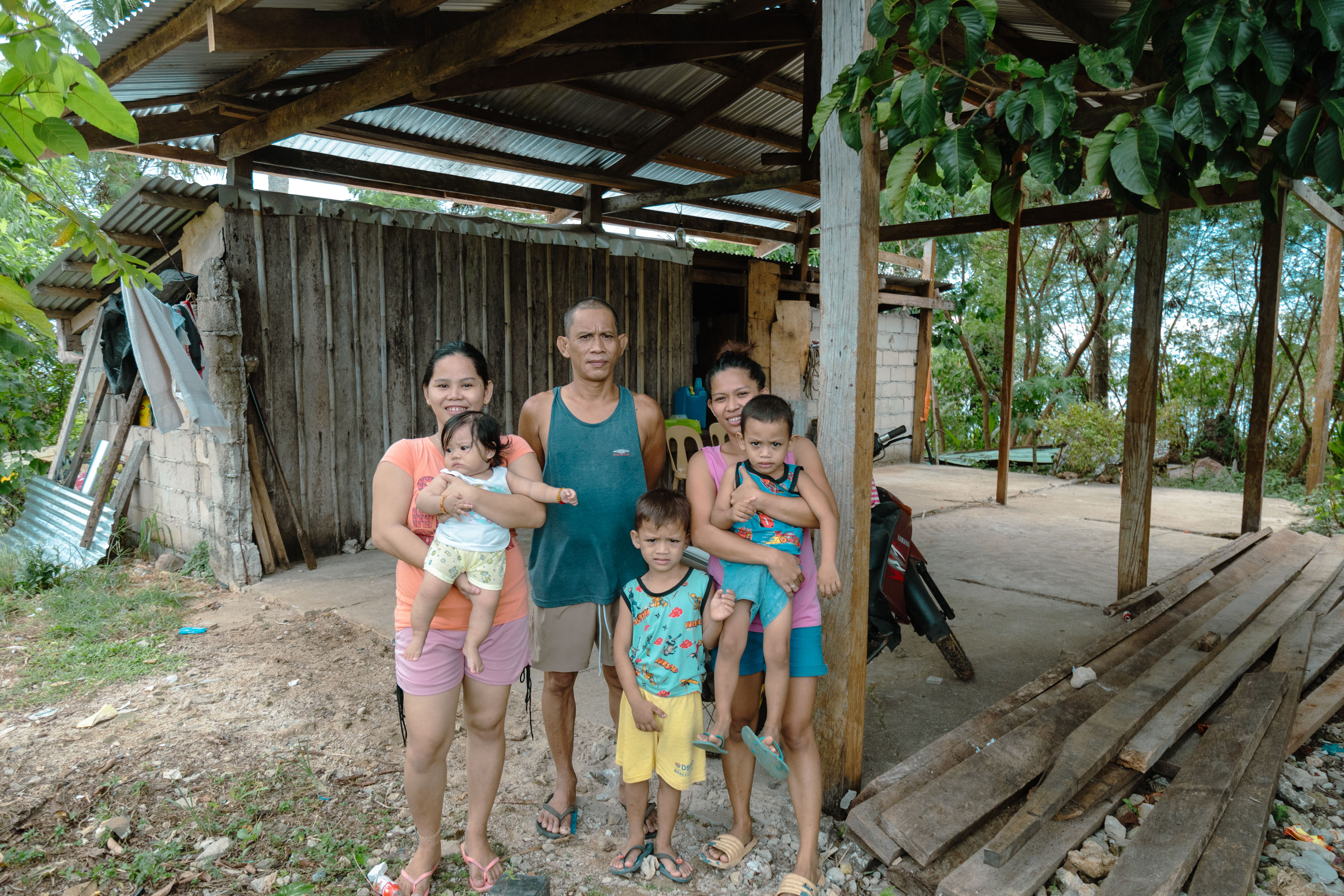
The Barrientos family in front of their house, which was mostly destroyed after Odette. Photo by Nicholas Muller.
To protect their house, he decided to hide with his wife under their kitchen sink while the rest of his family fled to a nearby school turned into an evacuation center, crawling on their hands and knees.
Siargao, in the “typhoon belt,” is an island in the southeastern corner of the Philippines in Surigao del Norte province. It was the first point of landfall for category 5 Supertyphoon Odette. Internationally known as Rai, it was the second most destructive storm in Philippine history after Haiyan in 2013. It swept across the country’s landmass, ravaging hundreds of communities in Bohol, Cebu, Surigao del Norte, and the Dinagat Islands.
Odette was the 15th typhoon of that year, by far the strongest, making a direct hit. According to UNICEF, “Burgos was one of the municipalities that bore the brunt of Typhoon Odette’s impact. Geographically facing the Pacific Ocean, many of its communities experienced storm surges and violent winds.”
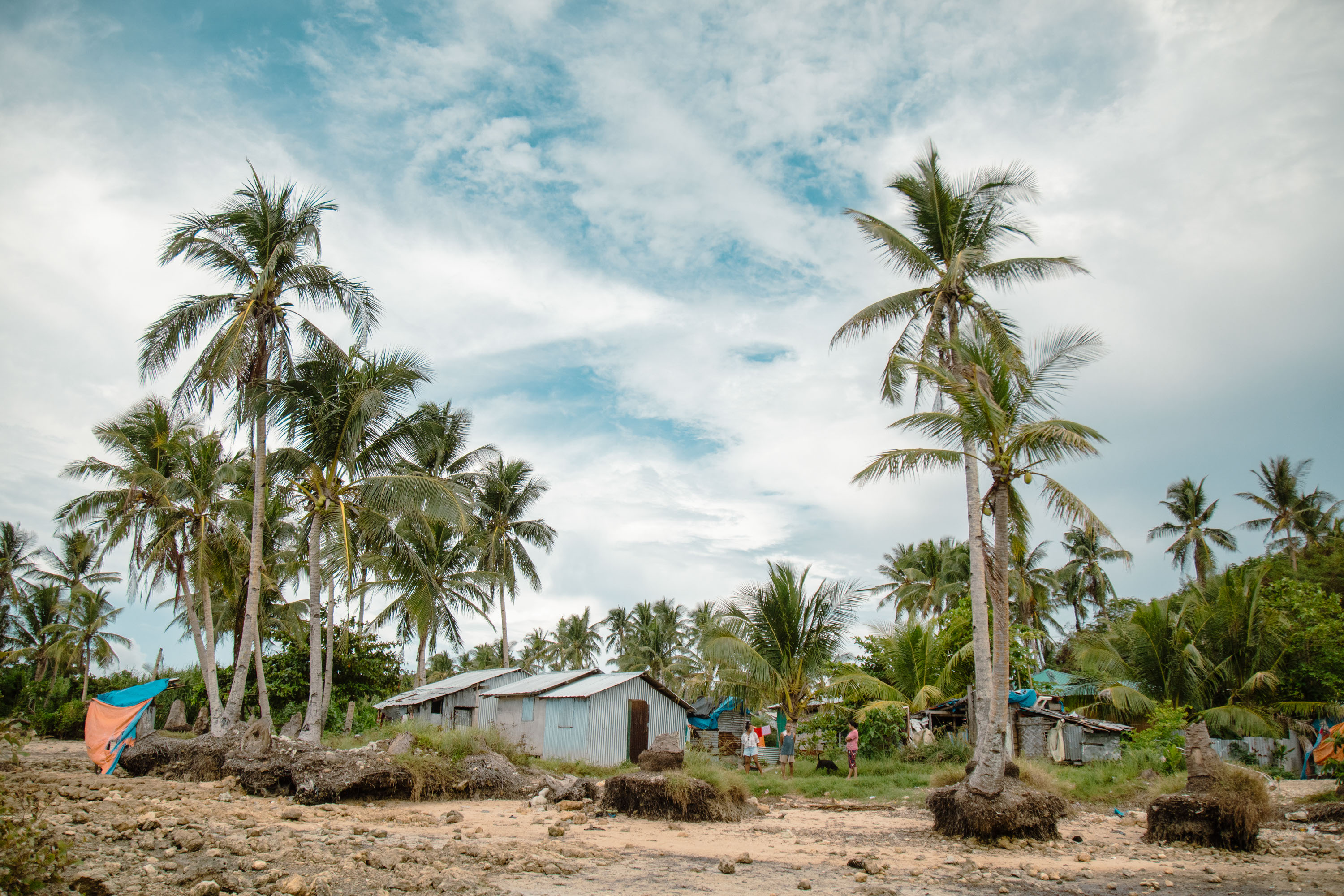
The village of Barangay Rizal in northeastern Siargao, where major devastation occurred. Photo by Nicholas Muller.
After the storm, clean drinking water and shelter were in very short supply, creating an immediate health crisis as people became sick from drinking non-potable water.
When he emerged from under his sink a few hours later in the late afternoon after the storm had passed, Barrientos immediately broke down in tears at the utter devastation he could see outside for kilometers in every direction. There was little of his family’s home left. Around much of the island most houses, hotels, and other buildings met a similar fate.
“The roof was everywhere and the entire structure was gone. The coconut palms were also all gone too, which was always the sole source of our income here,” he says.
The government had eased COVID-19 restrictions in the Philippines weeks earlier and tourism, which is the lifeblood of the Siargao economy, was coming back. Then Odette hit, decimating an estimated 90 percent of the island. The livelihoods of many of Siargao’s residents were instantly destroyed.
Five died in Barrientos’ tiny community, made up largely of fishermen. The survivors have been living in temporary structures ever since. Complicating matters, many in the village are informal settlers and have no land rights. Now, many former fishermen live in an informal settlement next to the sea. They have reinvented their lives and started working as carpenters, rebuilding houses and other structures in the community.
According to Reuters, “the typhoon affected nearly 4.5 million people, including about 500,000 sheltering in evacuation centers, government data showed.” Hundreds of thousands were left without shelter, food, power, water, or communications for weeks. More than 400 deaths were recorded across the swatch of Odette’s destruction and more than 2 million homes were damaged or destroyed.
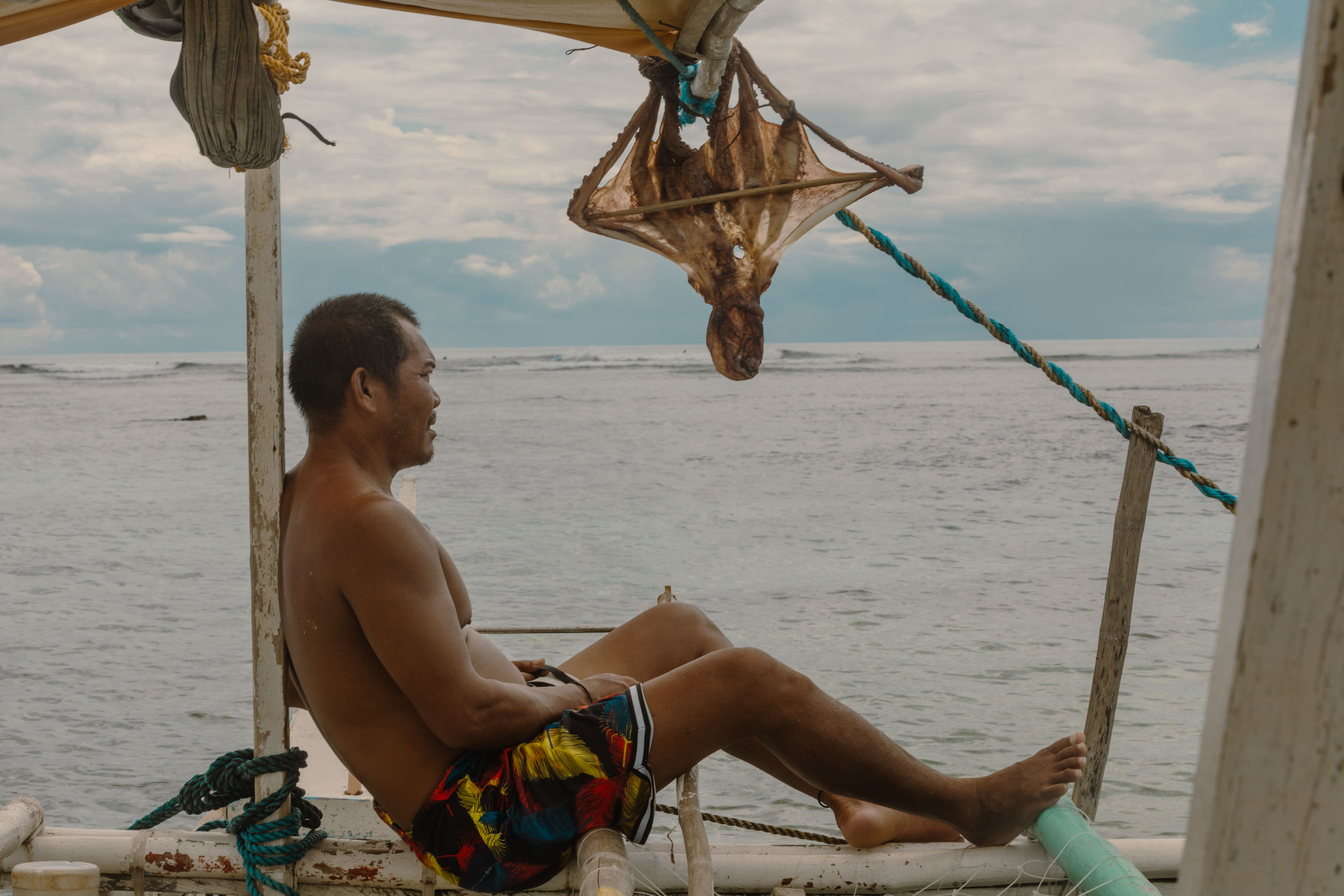
A fisherman dries his octopus on his boat on the outer reef in Siargao. Many struggled to rebuild their livelihoods without boats after Typhoon Odette. Photo by Nicholas Muller.
A Long Road Back
After the emergency response is over following a typhoon, victims spend months and years picking up the pieces. Some are left displaced and homeless indefinitely as any given typhoon fades into distant memory with new disasters replacing them. Like many island residents who bore the brunt of Odette, Barrientos’ family is still deeply psychologically traumatized by the typhoon and is struggling to recover. They lived in a temporary dwelling for a year but the rain didn’t stop. Then another typhoon came along, undoing much of the progress that had been made.
Although it may be safer inland from a future storm surge – a proposal made by then-President Rodrigo Duterte – simply moving inland was not a viable option for the fishermen in Barrientos’ village. They would not be able to realistically sustain themselves away from the sea, as the community’s main source of food and income relies on fishing. After some months, humanitarian organizations gave local fishermen in the village fishing boats and nets to start fishing again, which has helped.
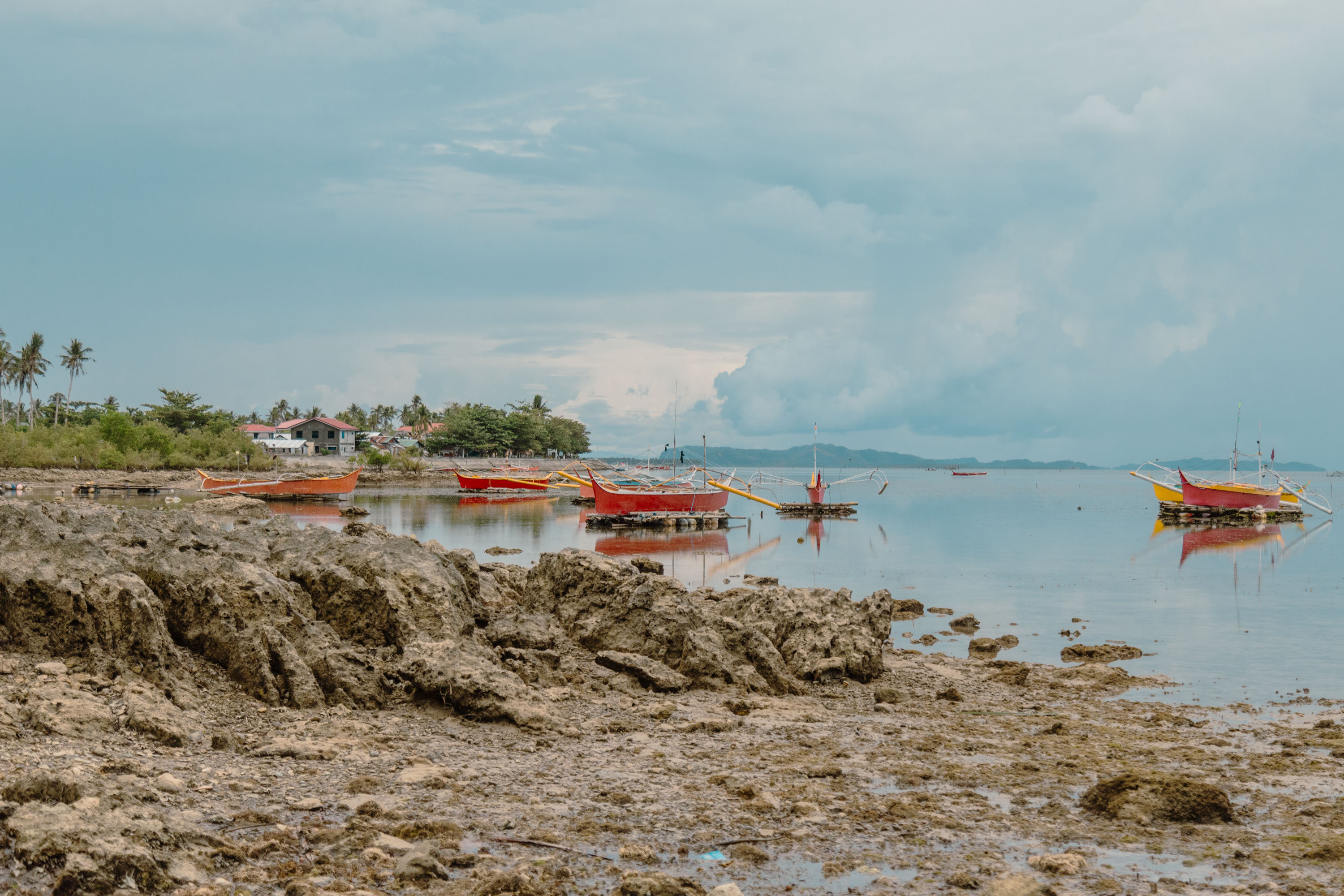
Boats donated by humanitarian organizations to fishermen so they can rebuild their lives. Photo by Nicholas Muller.
Still, today they depend on a waterfall some kilometers away from the community for freshwater supplies. Barrientos’ family – including his five children and seven grandchildren – survived for days on coconuts for sustenance until food aid could arrive.
“Because of the intense heat, the crops are dying here. There is no irrigation system here whatsoever,” he says.
Reliable access to information remains a problem that could exacerbate future disasters. The local communities have very limited access to the internet, which they have to pay for.

A mother and daughter search for shells at low tide in the village of Barangay Rizal. Photo by Nicholas Muller.
Like Sitting Ducks
The Philippines faces a barrage of typhoons annually (on average 20) and has experienced 14 super typhoons in the last decade alone, causing an estimated $10 billion dollars in damage.
“The Philippines is in a constant state of climate emergency,” Greenpeace Philippines campaigner Jefferson Chua told the Independent earlier this year in the wake of yet another typhoon.
According to the Global Climate Risk Index 2021, the country was ranked fourth among the countries most affected by climate shocks between 2000 and 2019. Due to rising ocean temperatures, typhoons are expected to appear more frequently in the future and at higher intensities.

Two boys play basketball close to the pier in the town of General Luna in Siargao. Basketball is the national passion of the Philippines. Photo by Nicholas Muller.
According to Project NOAH, a national disaster prevention website that operates in real time, nearly the entirety of the coastline of Siargao is at high or medium risk from future storm surges. It also shows in detail where the closest critical facilities are and how to prepare and react when a storm is approaching. It is doubtful that the island is sufficiently prepared for another catastrophic event.
On some parts of the island, most notably in the south, the recovery has been remarkably quick, albeit uneven. General Luna town, which is at the heart of the tourism economy of the island and suffered substantial economic damage, has rebounded successfully, with local businesses boosted by an influx of Filipino and foreign investment. The area is centered around the internationally famous surf spot of Cloud 9.

Surfers at the world-famous Cloud 9 surf spot in Siargao. Photo by Nicholas Muller.
Struggling to Recover
There is longstanding anger and resentment in the northern part of Siargao as people feel they’ve been left behind from the island’s recovery process, and did not receive much compared to the tourist spots in the southern part of the island.
Almost two years later, Barrientos and many in his hard hit community are still trying to recover. He says they initially received little monetary governmental assistance, and just 5 kilograms of rice and canned foods. One year later, the government gave the family and others in the community 10,000 pesos ($175), if they didn’t have any standing walls. Others were given a measly 5,000 pesos if they still had their walls intact.
Local political favors may have played a role in the distribution of aid to Siargao residents. “They promised to give extra roofing to them but that didn’t happen, and the money was given to other communities who supported the mayor,” Barrientos claims.
“Communities that didn’t support the government were not receiving money.”
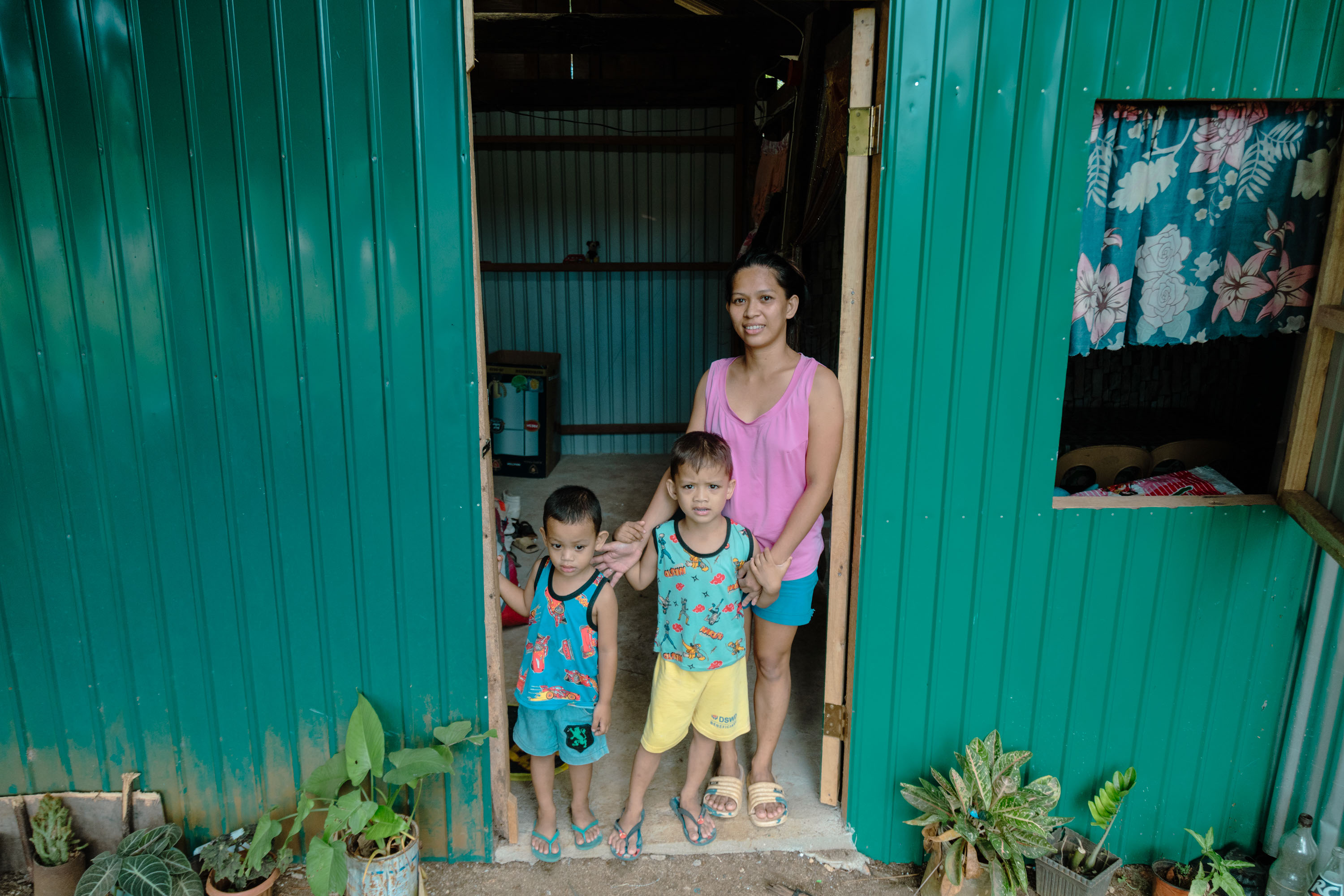
The Barrientos family in northern Siargao in their temporary shelter built after Typhoon Odette. Photo by Nicholas Muller.
At High Risk
According to the World Bank, 18 percent of Filipinos were living below the poverty line as of 2021. When climate catastrophes strike, the most vulnerable lose the most and struggle immensely to recover. For poor families like Barrientos’, who live in a high exposure zone next to the sea, being prepared for the next disaster is nearly impossible.
“All of the evacuation centers were destroyed and there were none rebuilt or a plan in place [that we know of]. The season starts in November and there is no emergency plan that was announced to us,” Barrientos says.
Their neighbors, sisters Roselyn and Rowena Concha, are also traumatized by the 2021 typhoon. They relocated and now live in a space borrowed from a relative. “It’s obvious the water will come but we feel safer here and we can at least go up the hill.”
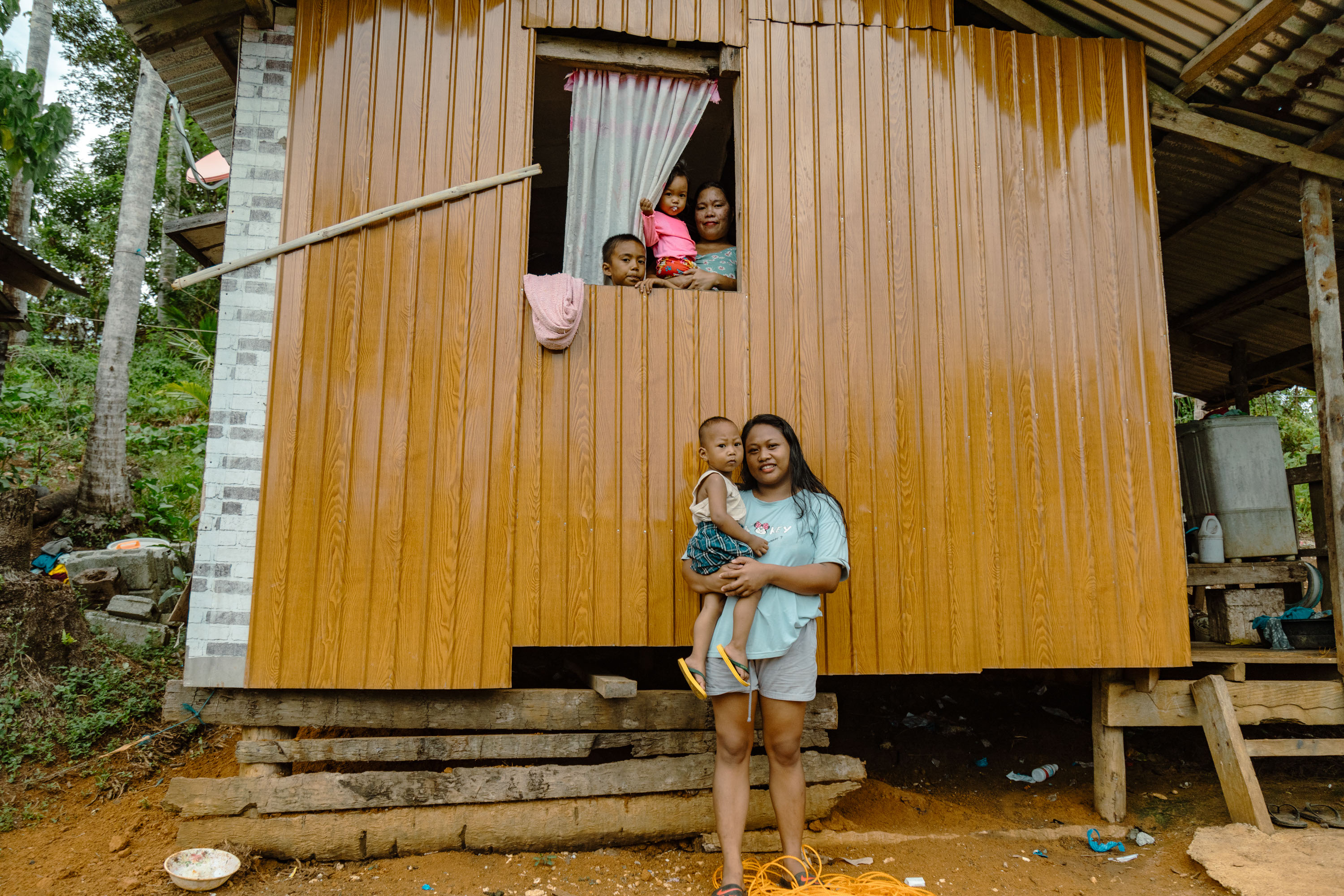
Afraid of future storm surges, two sisters Roselyn and Rowena Concha moved from next to the water to higher ground with their children to have a better chance to escape. Photo by Nicholas Muller.
When asked about preparing for future disasters, Barrientos shrugs. “I don’t think about these things every day because I have to feed my children, buy water, and build a safe structure with very limited finances.”
“Our lives depend on harvesting coconuts and it takes five years until a new crop comes back. In 2-3 years more the copra can be more open, which will make us more financially stable,” says Barrientos.
Desperate for immediate income, his wife went to work for a family in Manila for 18 months, and only recently returned.
“My dream. It’s simple. I just want to finish my house before the rainy season. We’ll stay as long as we can and don’t have any place to go. My daughters and wife won’t go back to Manila and work. They prefer life here,” he says.
“We are more serious about [future storms] now. Our ancestors left us this land so we must stay here,” he ends.
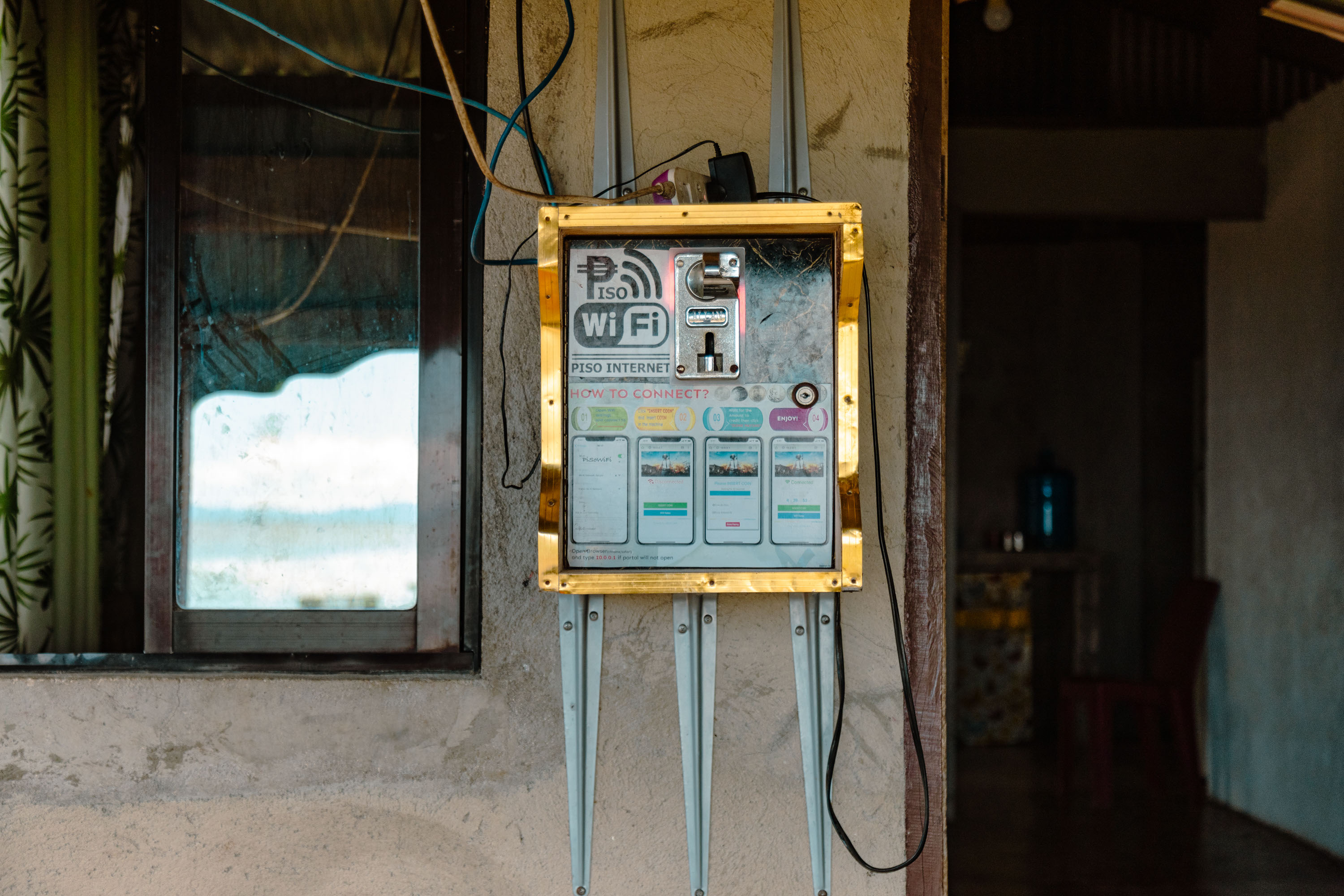
A paid internet connection point in Barangay Rizal for residents to use. There is still no working connection in their village, which is a major risk for future natural disasters. Photo by Nicholas Muller.
Trying to Cope
Michelle Latoza, a local guest house owner in Burgos, had some of her huts wiped out on the beachfront during the storm. As a transplant from Manila, she feels a strong responsibility to address lingering problems following Odette and to give back to the island she regards so dearly.
A storm surge in the town of Burgos broke through a sea wall and engulfed scores of houses. Now it’s being rebuilt, but slowly. The old wall crumbled during the storm surge and remnants of the concrete still lie on the beach.
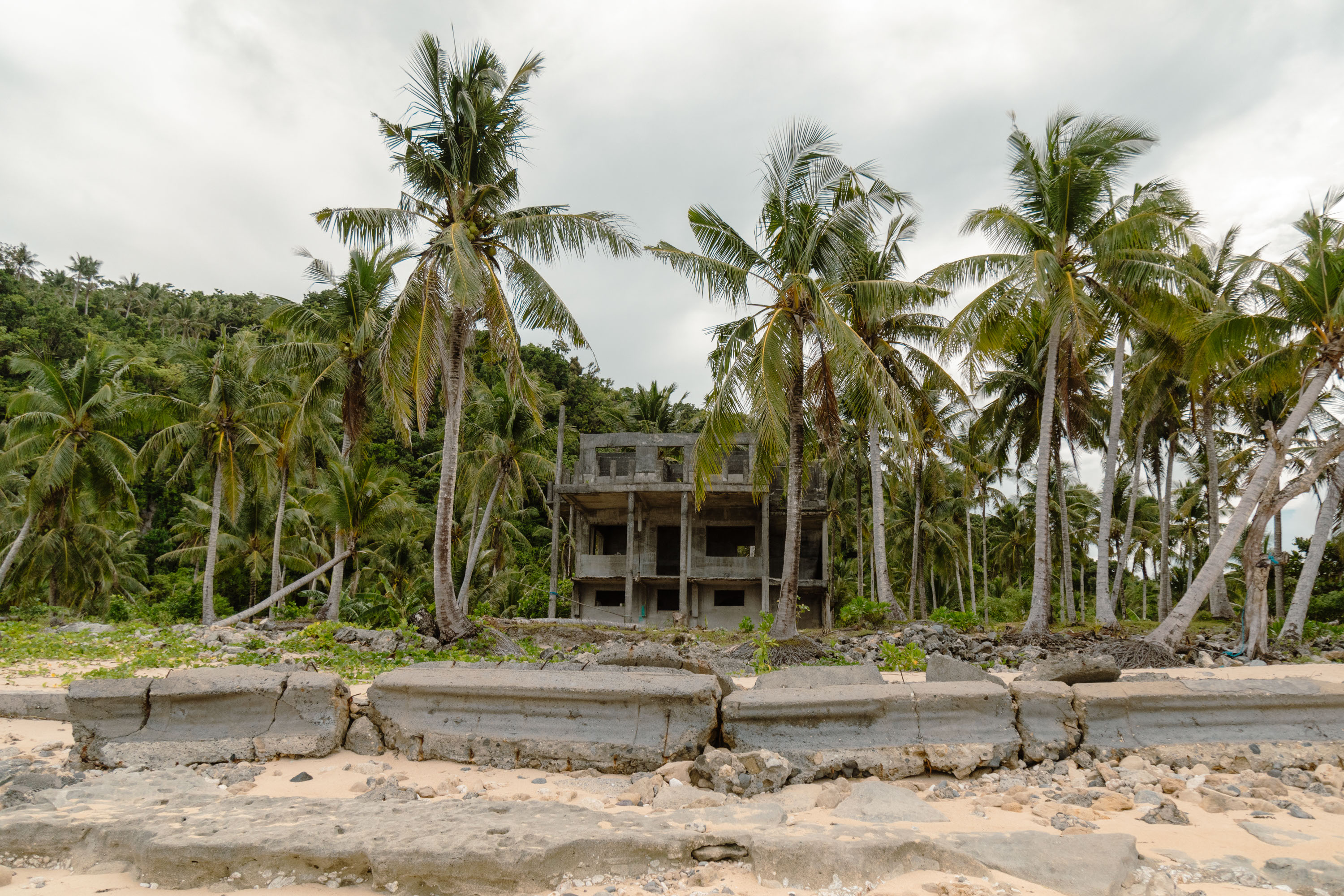
Remnants of the old sea wall in the town of Burgos, which was hit hard by Typhoon Odette and a storm surge. Photo by Nicholas Muller.
“The new sea wall is still a work in progress and will not likely be done by the time typhoon season comes in November,” says Latoza. “Some have pushed for sea walls in different parts of the island and others have pushed back against it because they think it’s ugly, costly, and useless,” she adds.
Coral cover, which is an additional important buffer against storm surge, was severely damaged to the point of being almost completely wiped out because of the ferocity of the typhoon in this part of the island. Other parts of the island have more extensive mangroves that better protect communities from enormous waves, likely lessening the death toll on Siargao writ large.
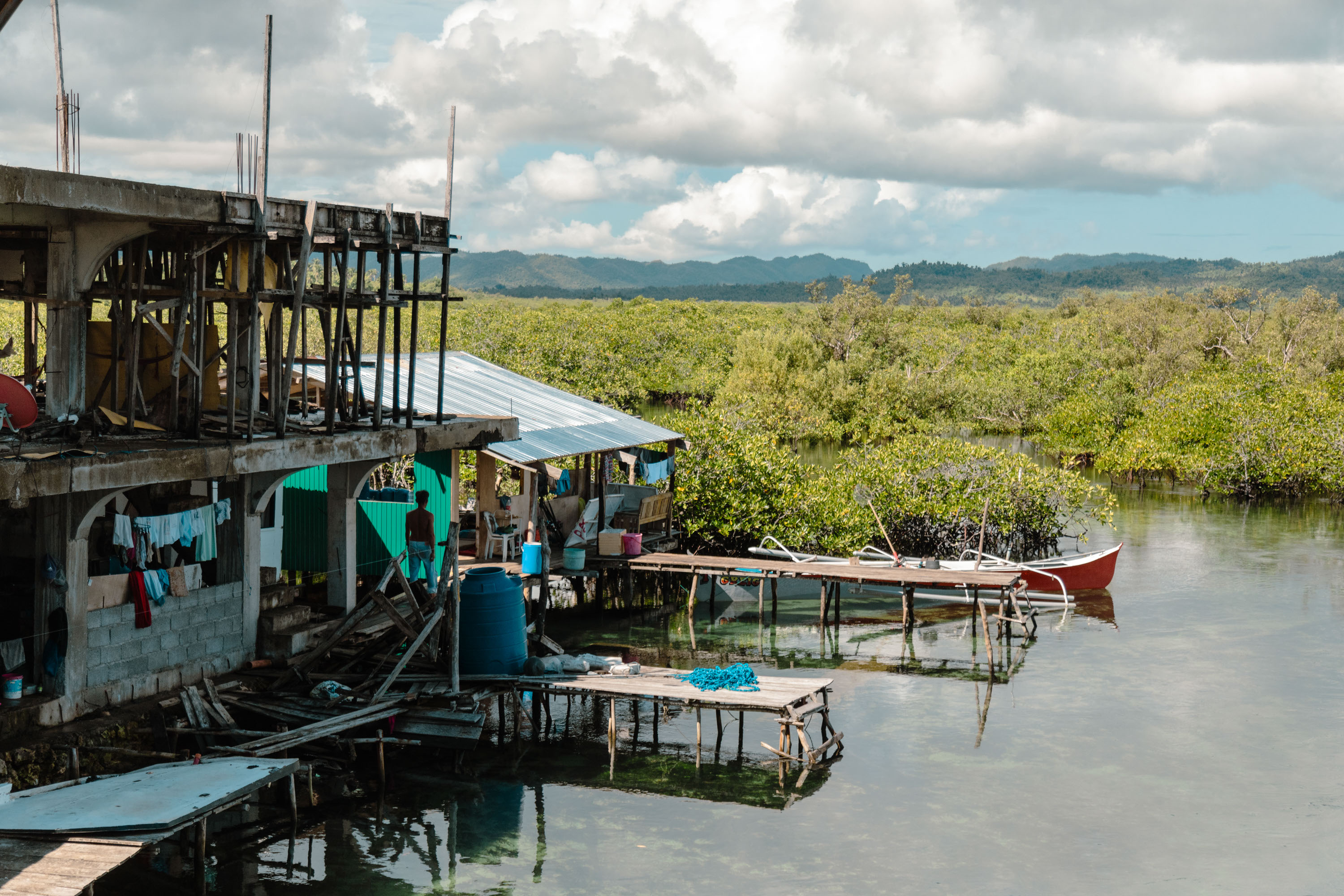
Residents living on elevated houses in central Siargao next to mangroves, which cover certain sections of the island and serve as an important storm surge barrier. Photo by Nicholas Muller.
As Siargao continues to recover, there is also a battle ahead for the island’s future. Some hope for a more sustainable tourism model that limits the amount of visitors on an island already constantly straining for electricity and freshwater resources. Meanwhile, developers push for it to become a premier tourist destination in the Philippines. There are talks of a larger airport, and there already are plans underway for a cruise ship and cargo terminal expected to have major environmental impacts on the island’s natural habitats and barriers from future storms.
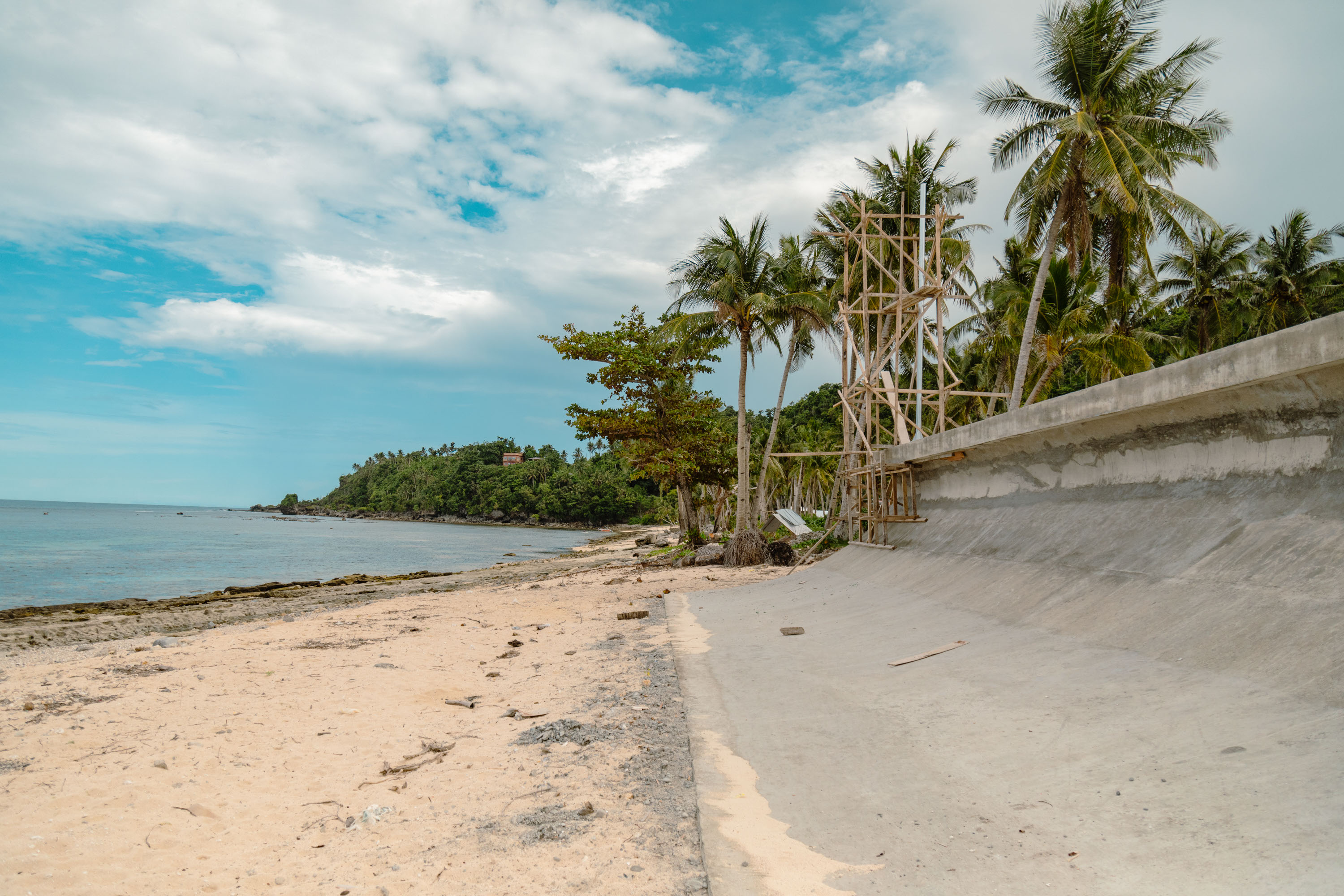
A view of the new sea wall being built in Burgos to better protect against future storm surges. Photo by Nicholas Muller.
Latoza runs a small business employing people in the area to learn new skills and sell their work to businesses on the island. “Some rebuilt quickly, others left, and others still struggle to pick up the pieces even two years later. The hard-hit north is a world away from the touristy southern strip, which is much larger. It has not received the same resources to quickly rebuild,” she says.
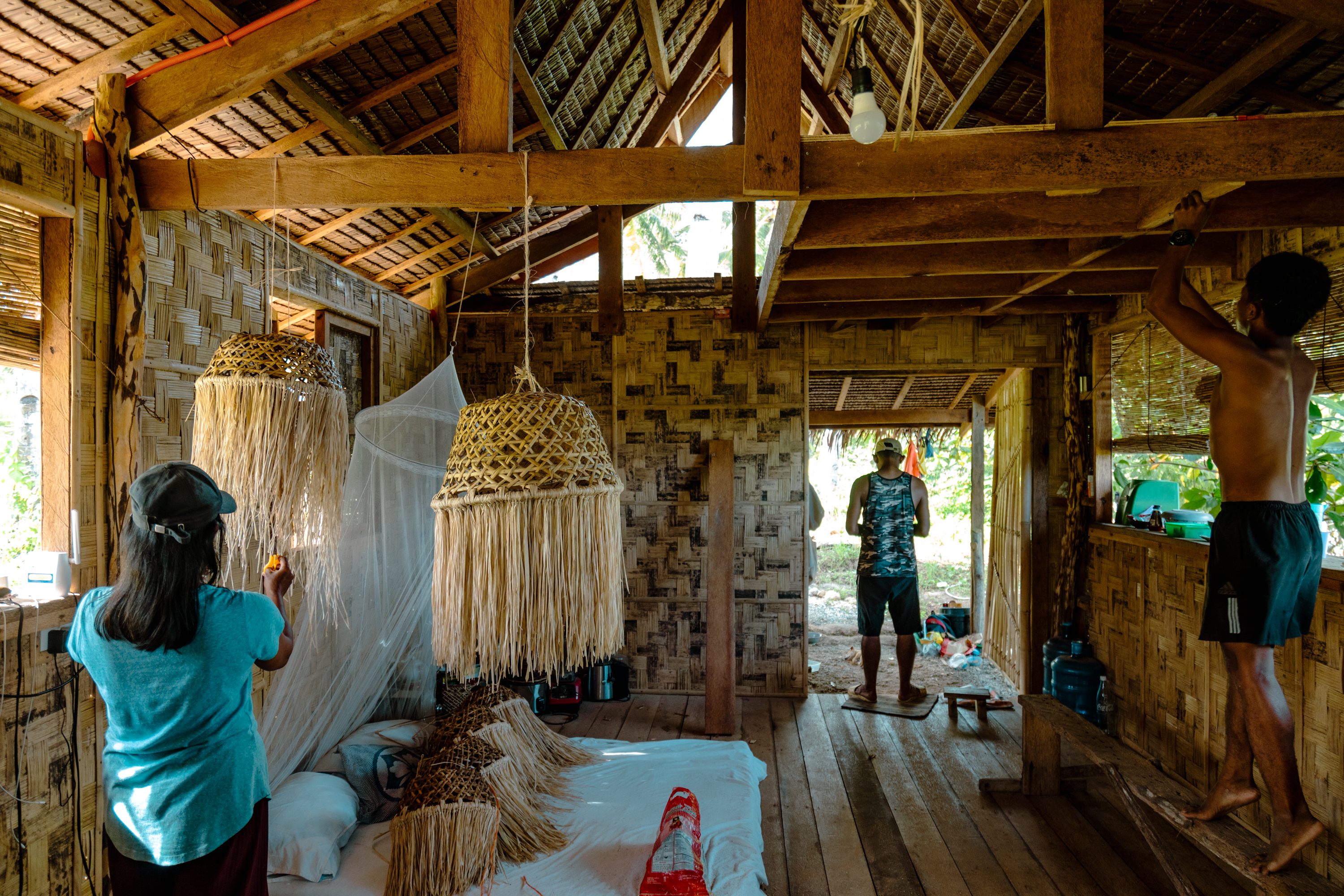
After the typhoon many residents in Burgos lost their income. Michelle Latoza, a local guesthouse owner, tries to help them get back on their feet by helping to facilitate the sale of woven lampshades to hotels on the Siargao. Photo by Nicholas Muller.
Latoza says some are trying to make the best out of a difficult situation. A farmer she knows crawled all the way back to his house during the typhoon to save his family, and now runs a successful organic farm business. “Some are developing organic and sustainable farm businesses, which would ideally shore up the food supply for the island in the event of another catastrophe,” she says.
There is a deep sense of community on the island to protect its future. “People are becoming more conscious about the sustainability of the island and becoming more resilient and self-sufficient to better prepare for future disasters,” she says.
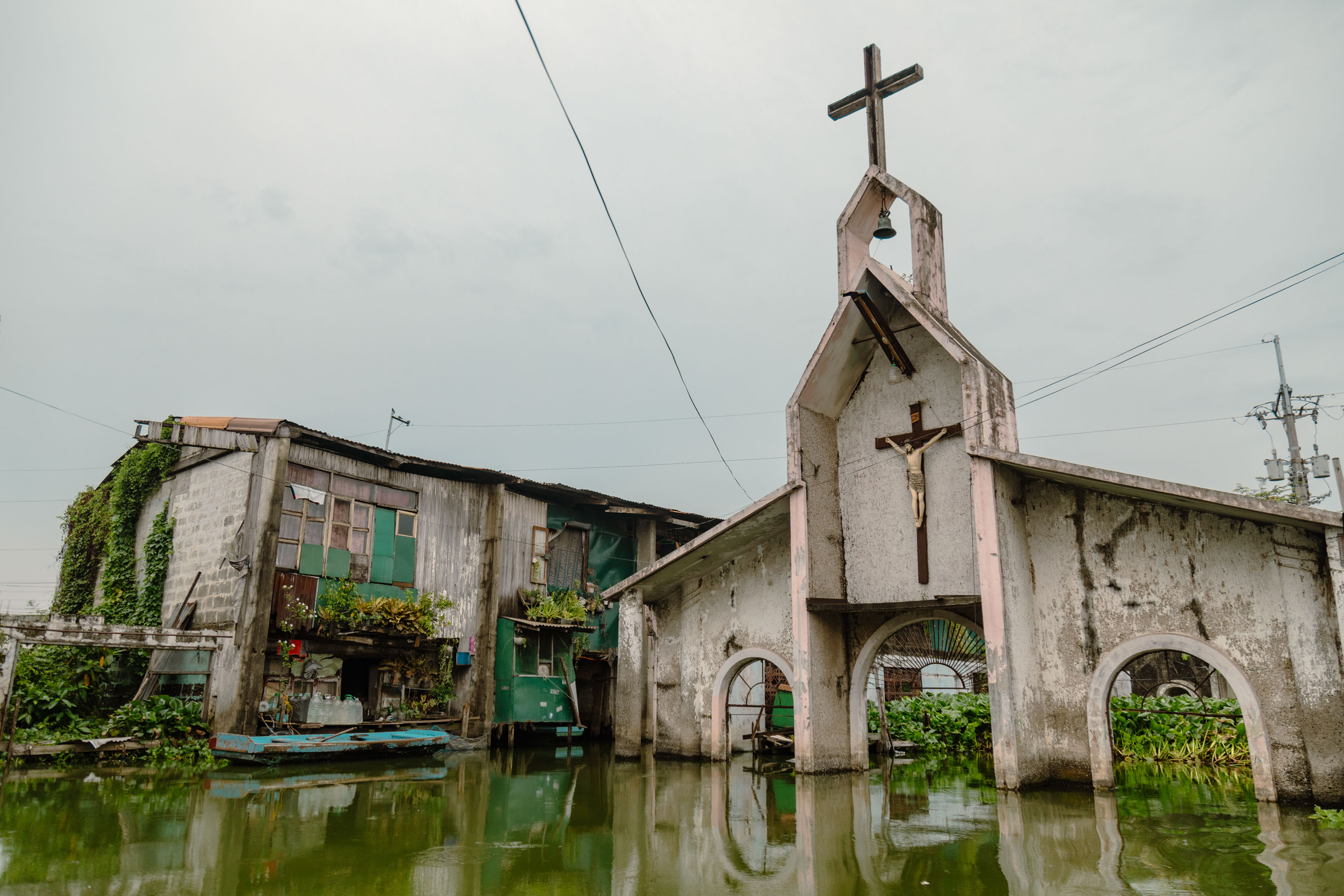
A church in Artex compound Malabon halfway underwater. The village has been flooded for several years. Photo by Nicholas Muller.
A World Apart, Similar Risks
On the opposite side of the country, seemingly a world away from the idyllic island of Siargao, is the grinding urban chaos of metro Manila, a hodgepodge of dozens of cities together constituting greater Manila.
The four most densely populated cities in northern metro Manila – an area known as the CAMANAVA (CAloocan, MAlabon, NAvotas and VAlenzuela) – are the low lying areas, with barangays (districts/villages) all identified as extremely flood prone.
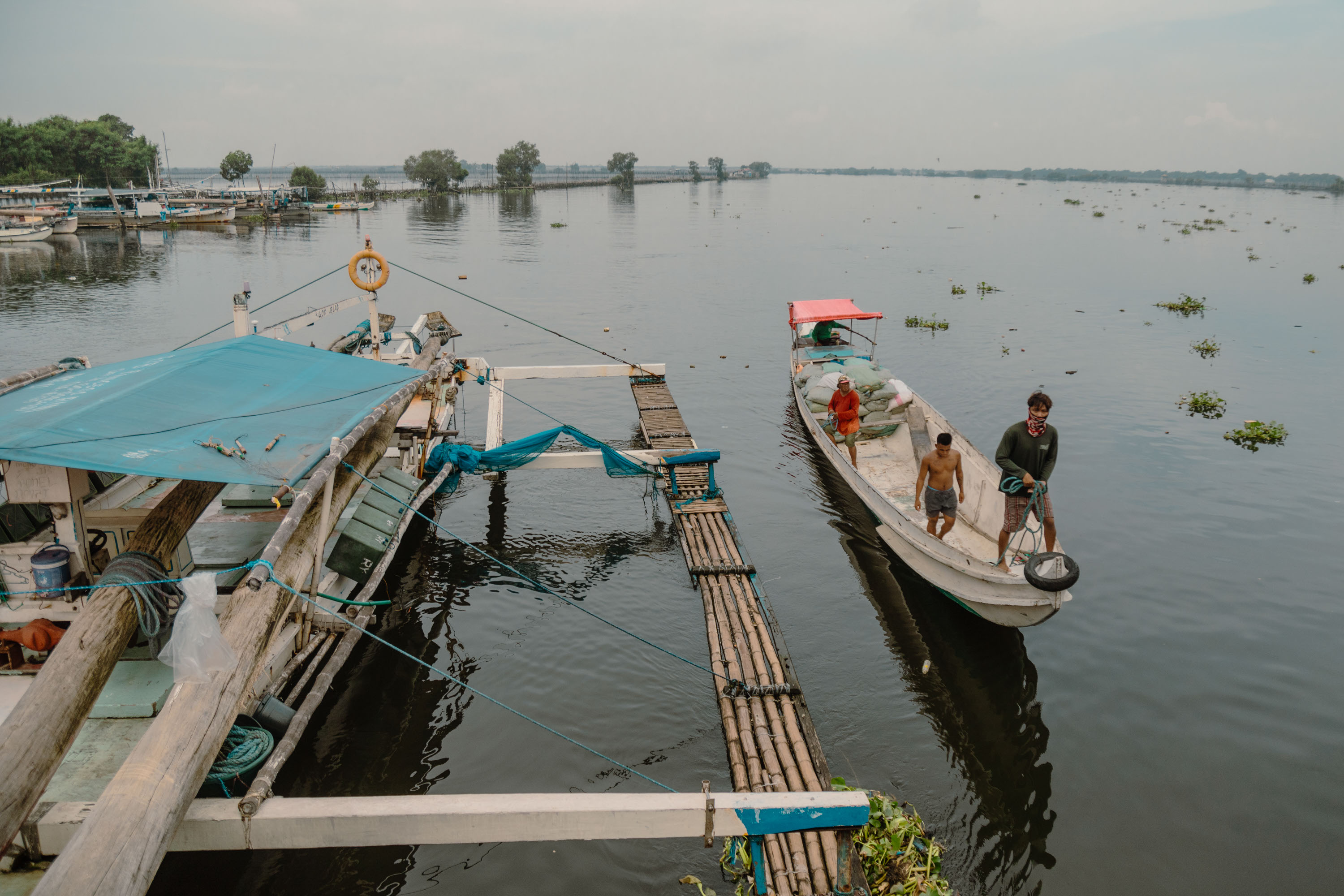
A boat arrives to unload items in Obando, northern Manila. The entire area is extremely vulnerable to inundation. Photo by Nicholas Muller.
The problems in cities like Malabon are exacerbated by the interconnected river systems, which overflow and combine with strong rainfall to make life miserable for its residents in the lowest lying area of the entire city.
For almost two decades, in the Artex compound of Malabon, its residents here have lived in informal settlement communities (silongs) with parallels to those in northern Siargao. They are living in and around water that never subsided after a typhoon. Linda Perez, a community leader and a long time resident who has lived in Malabon since 1969 says that the area has lost “meters of land to the water.”
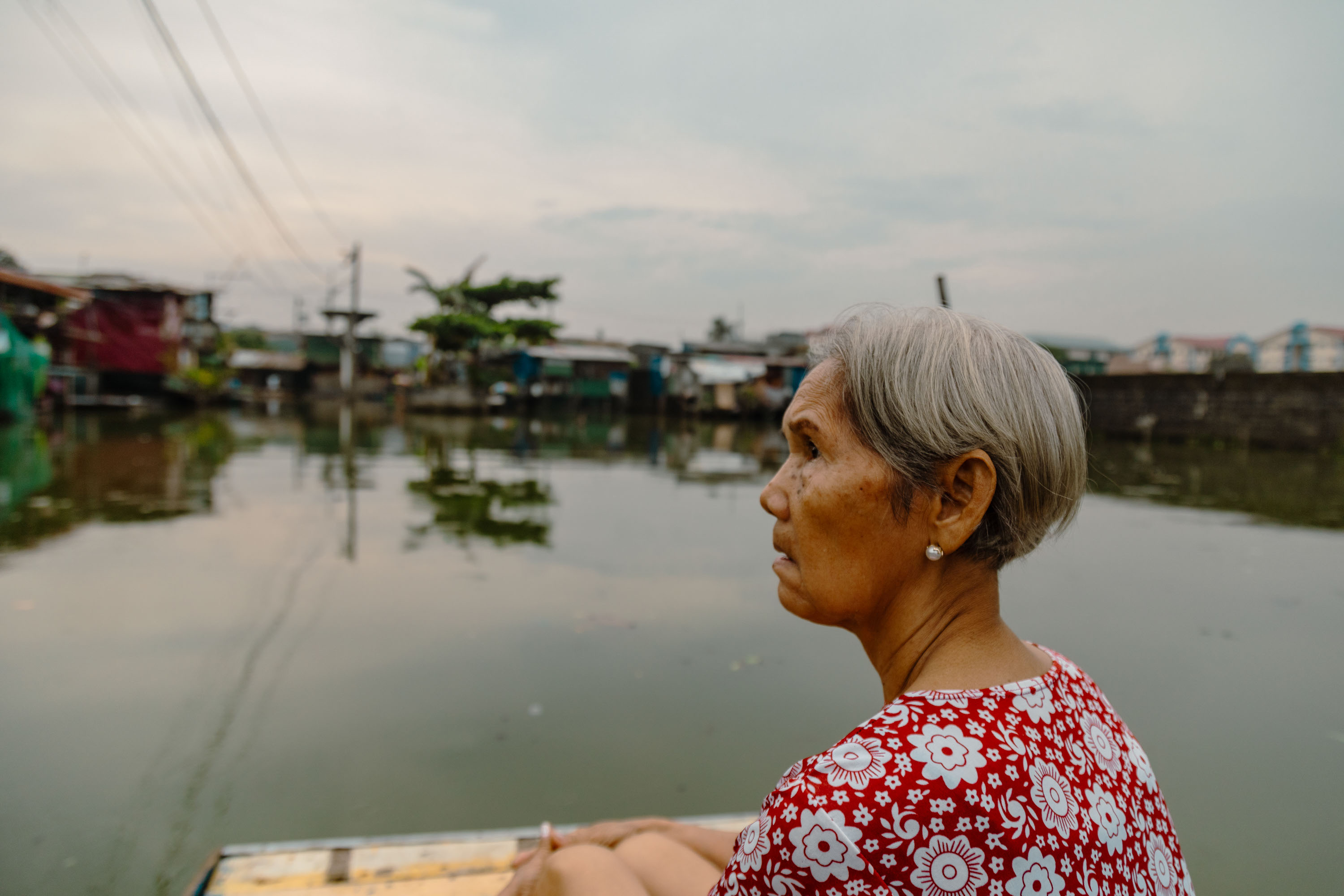
Linda Perez, a long time resident of Artex compound in Malabon. Photo by Nicholas Muller.
She says Typhoon Ondoy in 2009 caused considerable water level rise, trapping residents and forcing them to change their lives forever. “There is no clean water access and residents have to pump water and load them onto small boats to bring them home. Litter clogs drainage pipes and makes the flooding problem even worse which cannot handle the heavy rainfall,” she says.
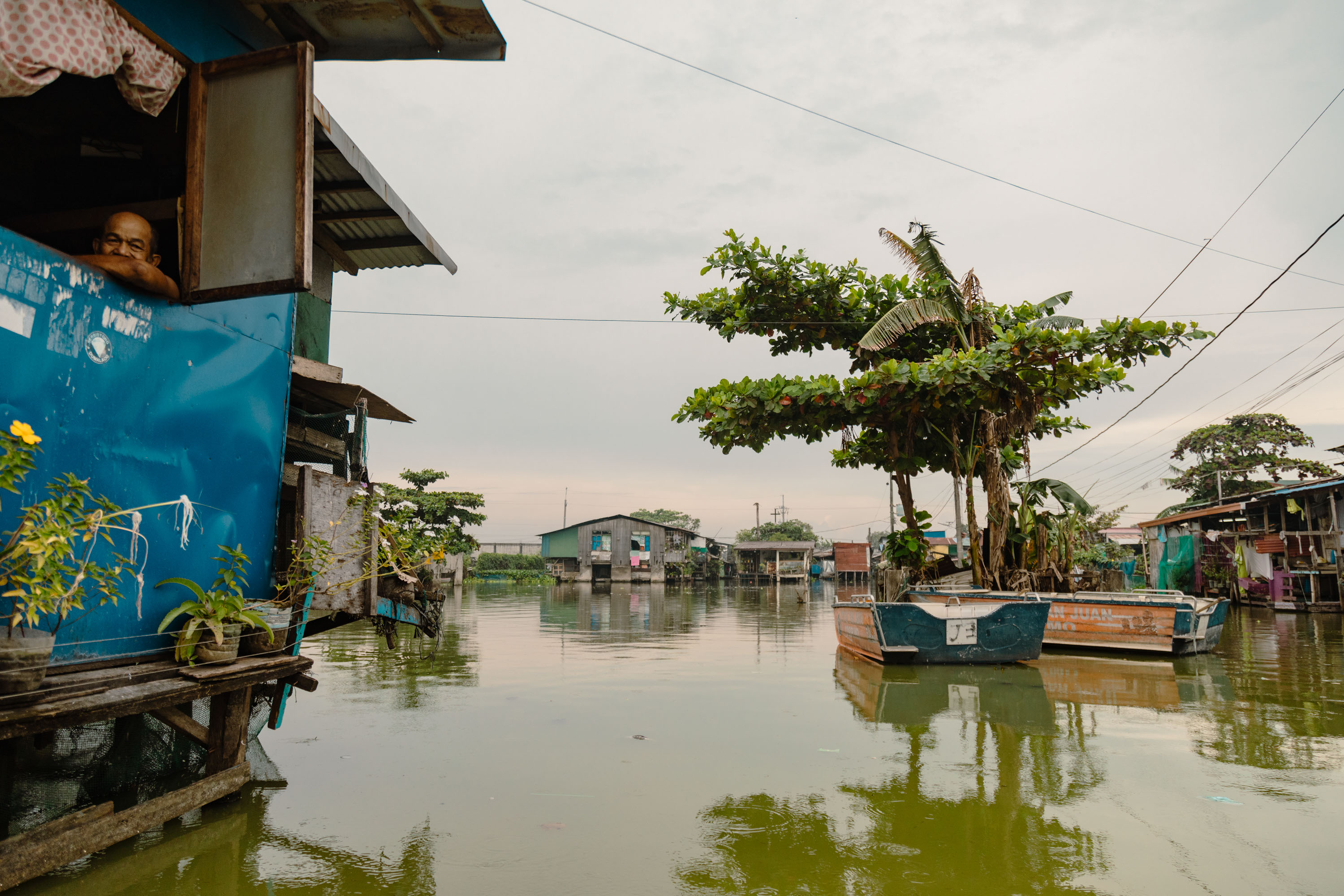
A view of Artex compound in Malabon, northern Manila. Photo by Nicholas Muller.
Some barangays have implemented better waste management models, which alleviate some of the problems. But despite varied attempts by the city government to improve the flooding problem with walls, dozens of pumping stations, flood gates, and declogging, they only offer temporary relief to an enormous and growing challenge for Manila. Even on dry days, drivers along the road next to the sea wall cut through flooded streets on a daily basis. When it rains, inundation comes quickly.
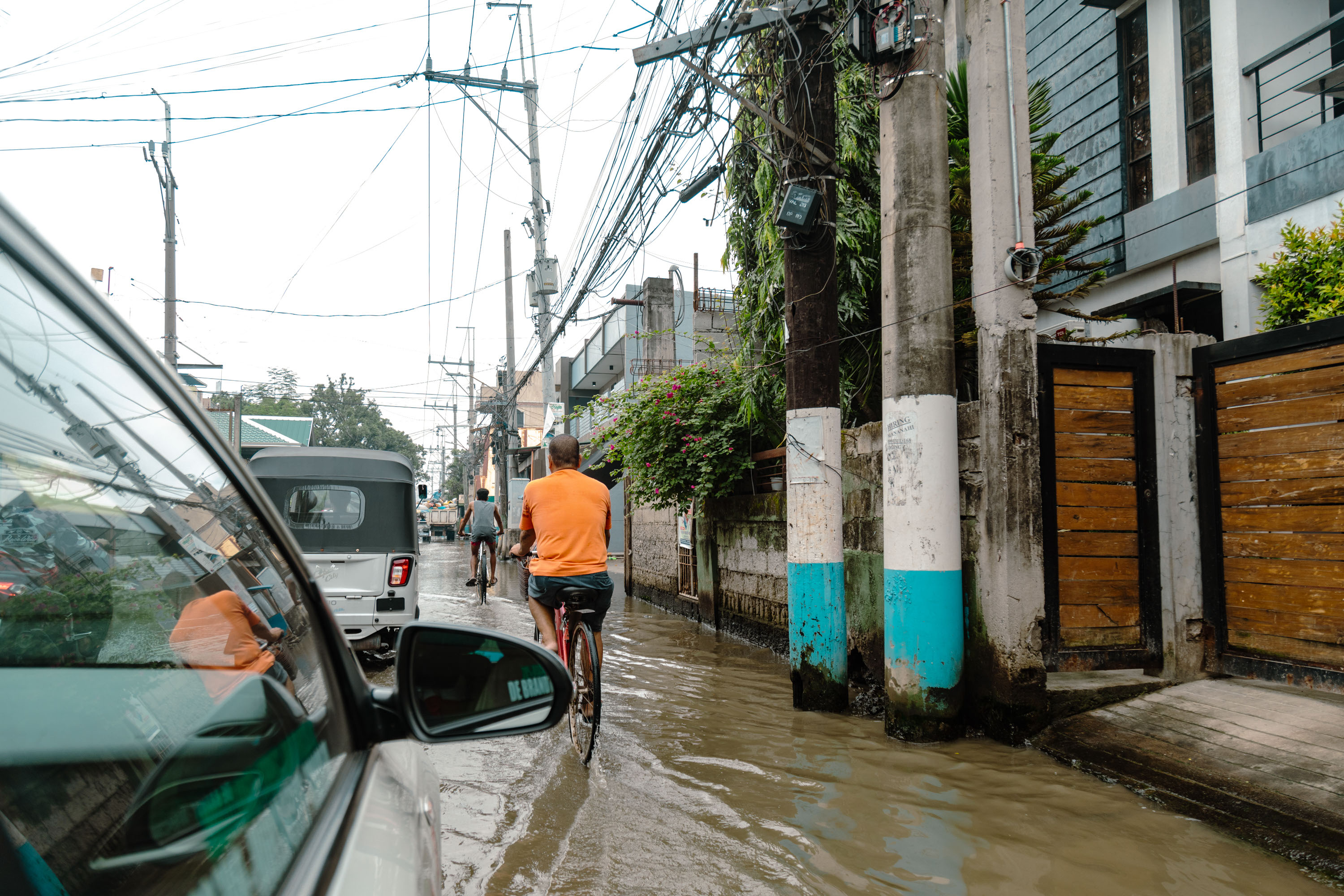
Even without heavy rain, streets in Malabon become quickly inundated. Photo by Nicholas Muller.
Taking a small boat in Malabon with Perez, she says, “many people were working at the Artex textile factory and it closed already because of a strike.”
Things have continued to worsen since.
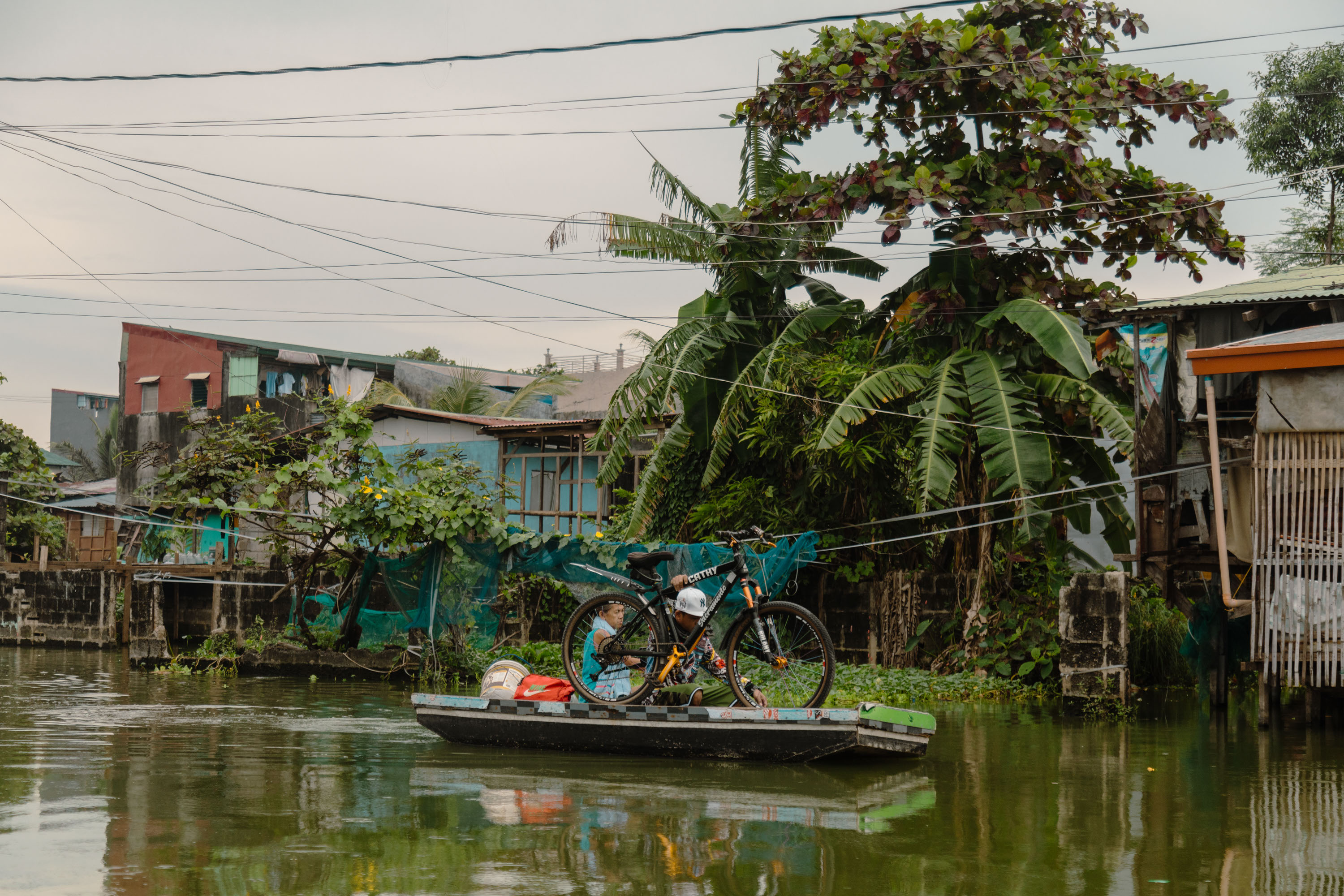
A couple transports their bicycle and other goods by boat in Malabon. It is the only way for residents to reach their houses. Photo by Nicholas Muller.
Artex residents have struggled to eke out a living despite repeated promises by the government to be relocated. “They promised they would build us a subdivision, but it was never built,” Perez says.
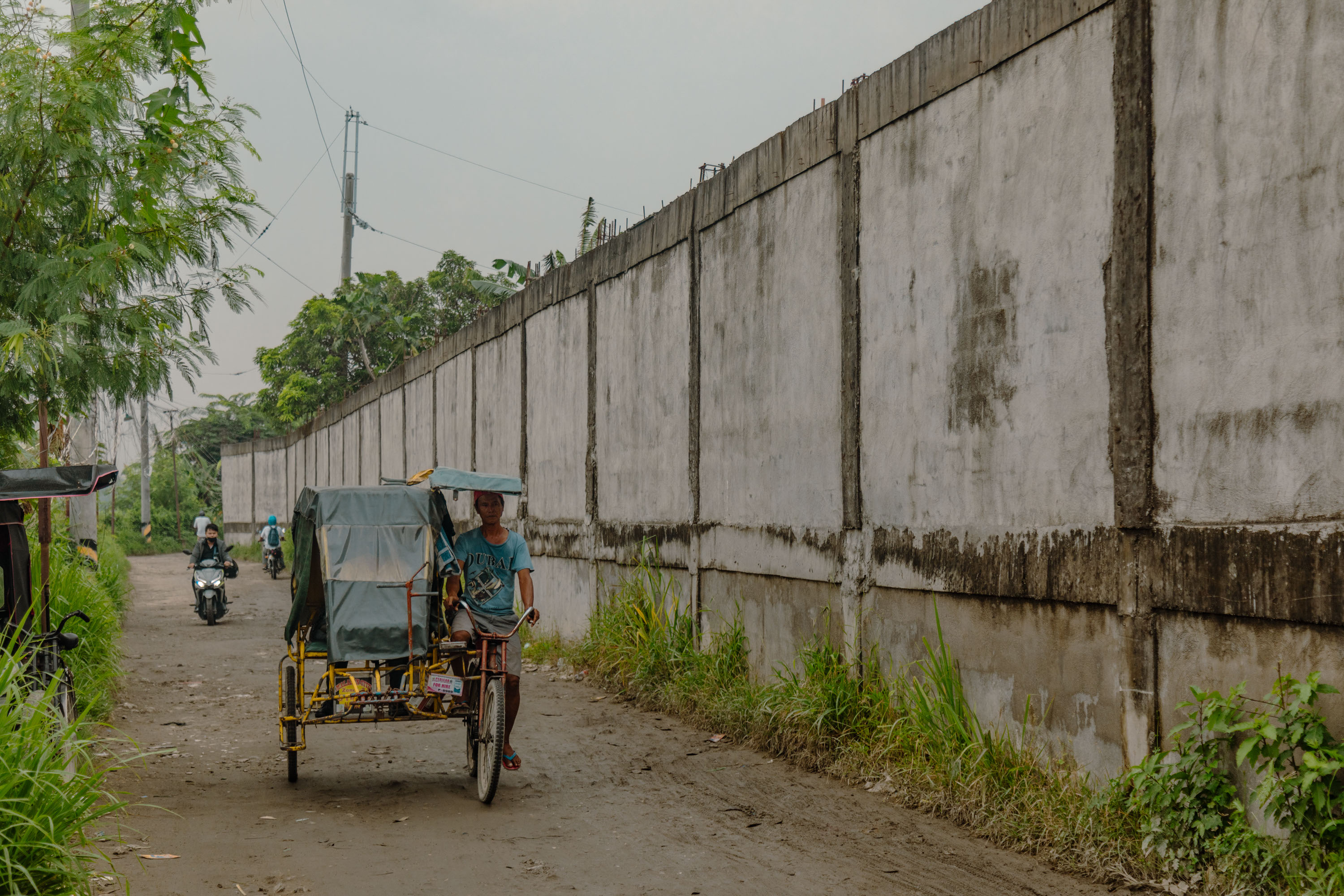
A sea wall in the city of Malabon, north Metro Manila. Photo by Nicholas Muller.
If predictions are correct, the frequency and intensity of flooding is expected to increase, wreaking further devastation in an already highly vulnerable region. According to the Intergovernmental Panel on Climate Change (IPCC), “non-climatic anthropogenic drivers, including recent and historical demographic and settlement trends and anthropogenic subsidence, have played an important role in increasing low-lying coastal communities’ exposure and vulnerability to SLR (sea level rise) and extreme sea level (ESL) events.”
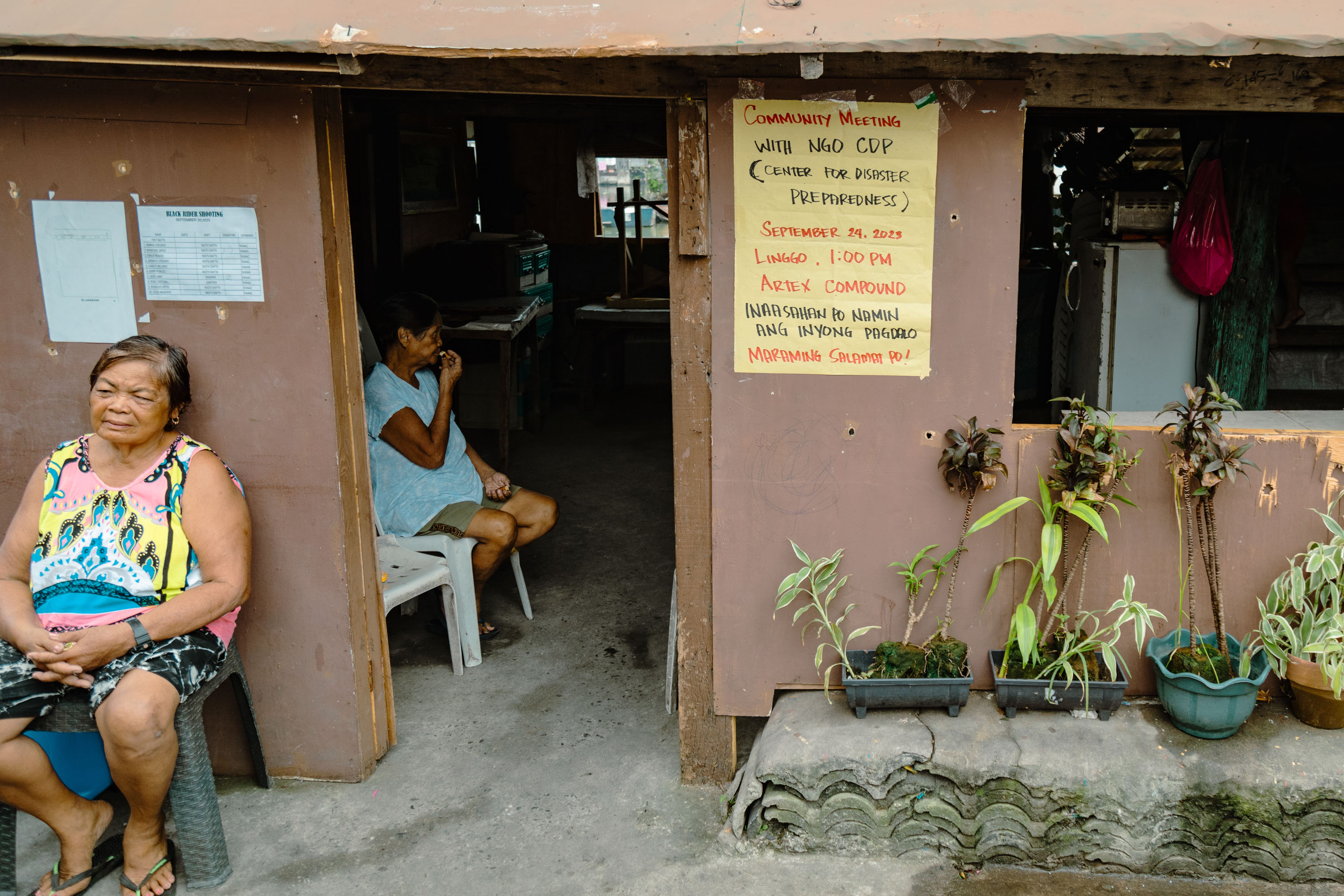
A sign for a community meeting to discuss disaster preparedness in Artex compound, Malabon. Photo by Nicholas Muller.
This means that for vulnerable Filipinos in coastal communities across the country, both in urban centers and on remote islands, millions are living just one storm away from catastrophe with few viable alternatives. As storms continue to intensify, they sit directly in their path and wait for the next big one to come.
Perez refuses to leave despite continually deteriorating conditions and knows most of her community have nowhere to go. “We have to stay here, this is our place,” she concludes.
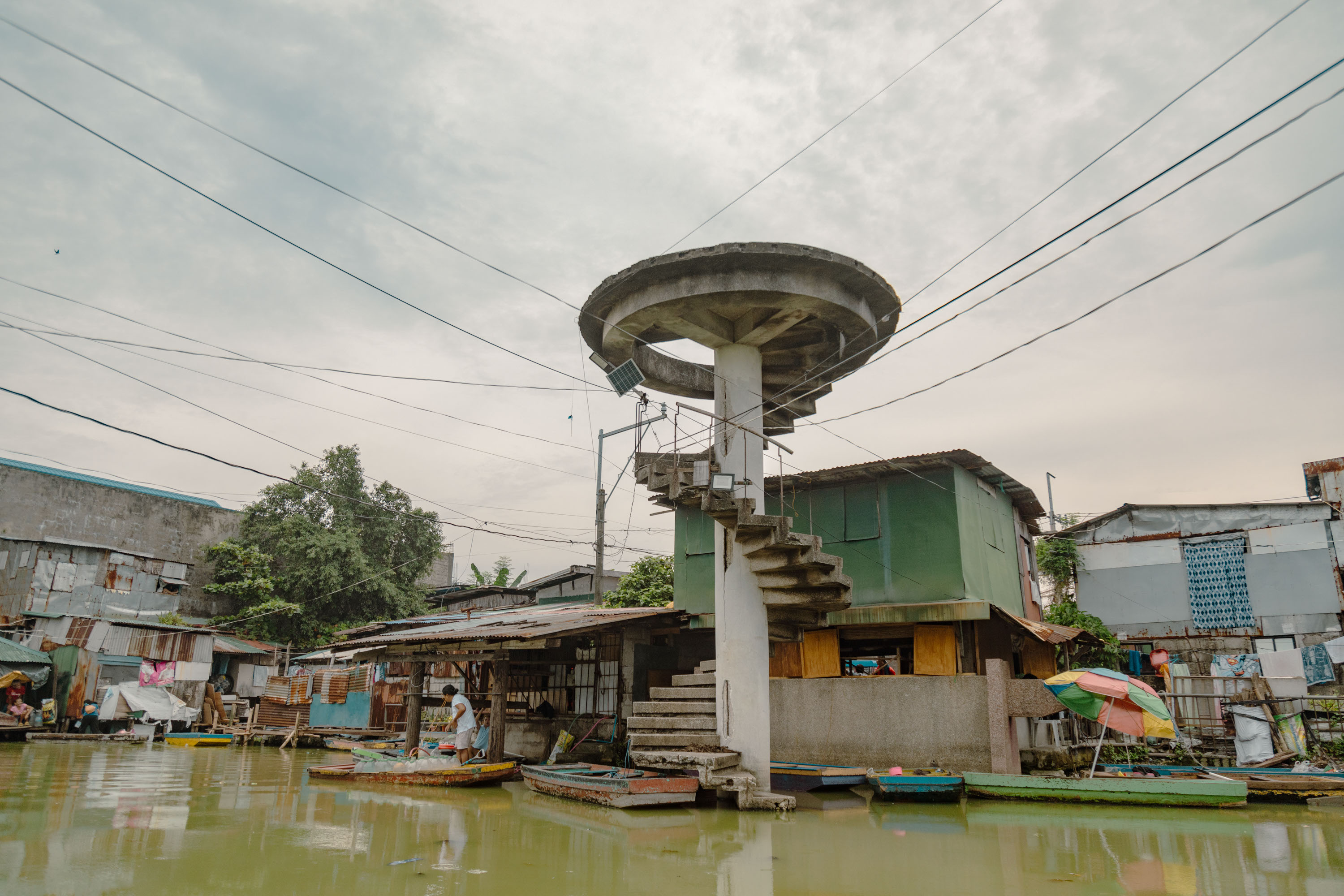
A woman fills up several water containers to put on her boat at the entrance to Artex compound in Malabon. Photo by Nicholas Muller.













